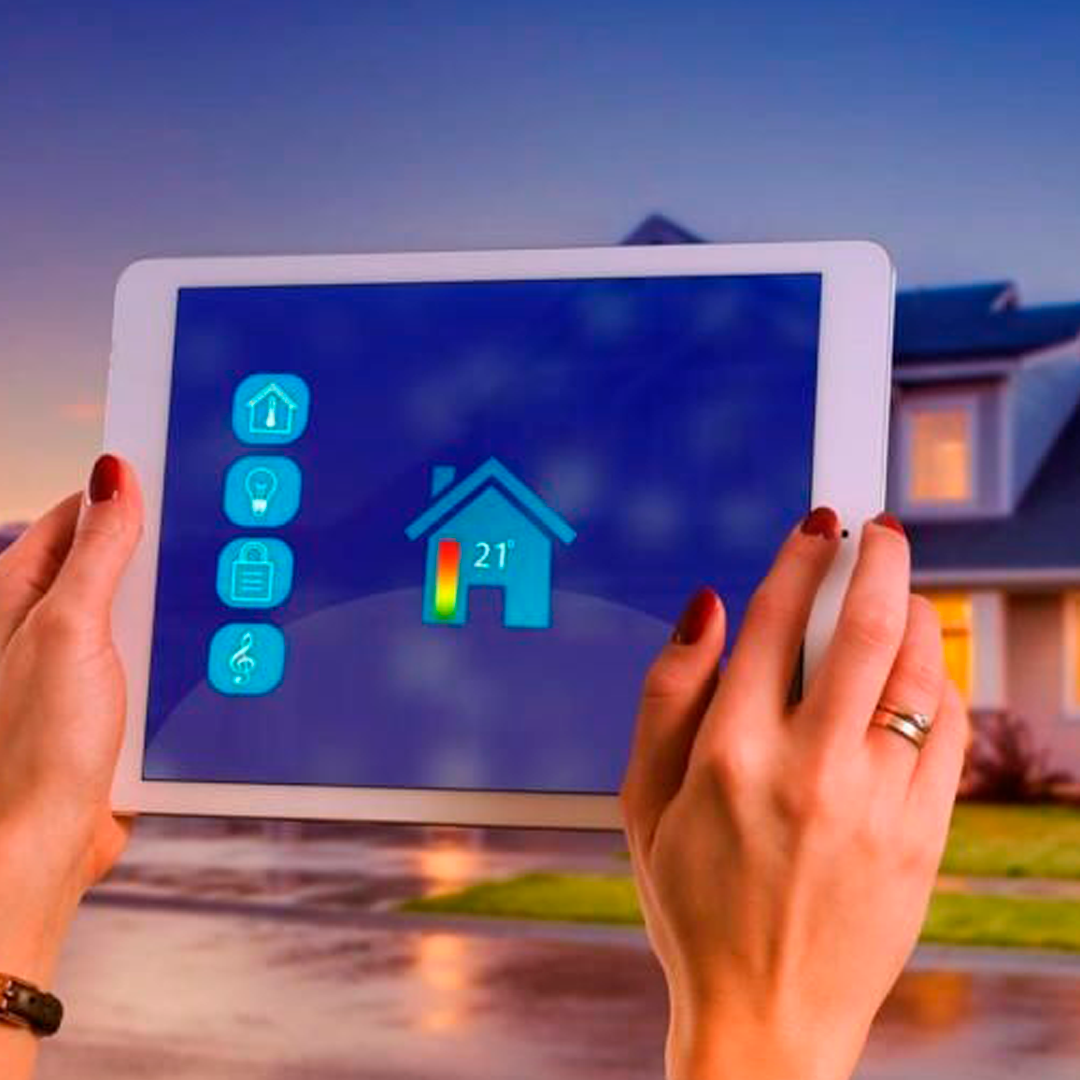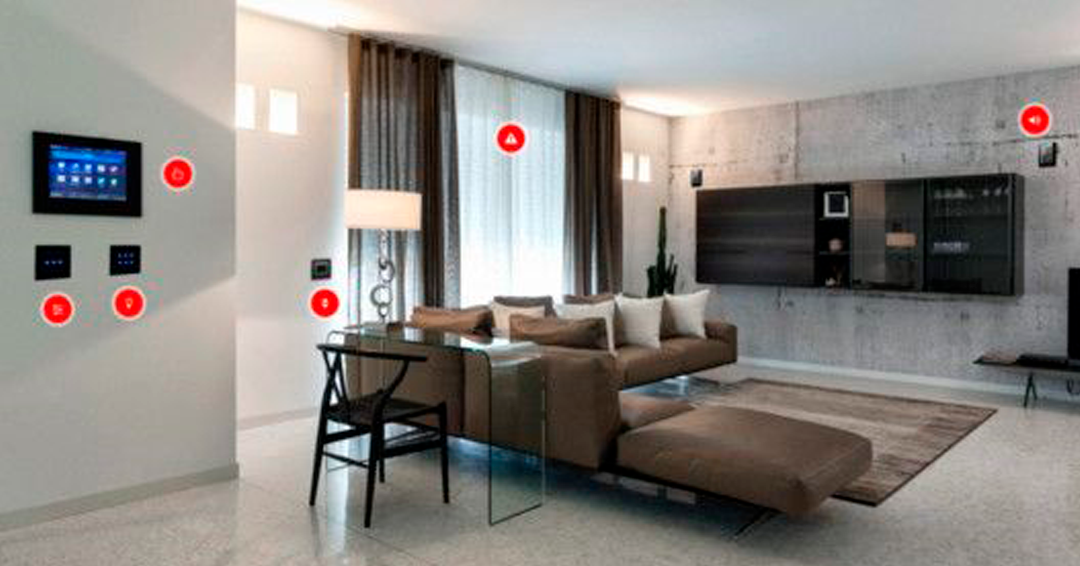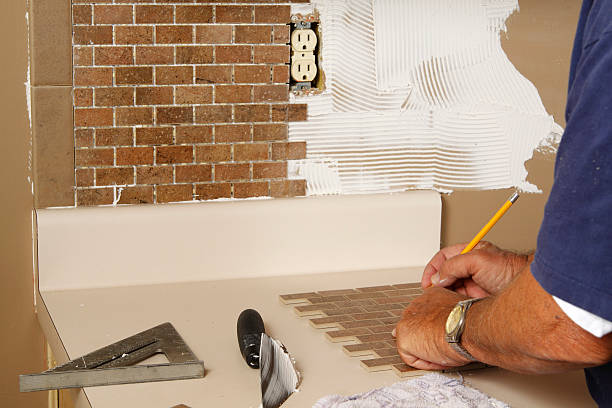The Ultimate Guide to Smart Homes: Revolutionizing Living Spaces
Table of Contents:
- Introduction to Smart Homes
- Essential Components of a Smart Home
- Building a Smart Home: Step-by-Step Guide 3
- Smart Home Technologies Explained
- Transforming Everyday Living with Smart Home Features
- Overcoming Challenges and Considerations
- The Future of Smart Homes
- Conclusion: Living in the Era of Smart Homes
Introduction to Smart Homes

1.1 What Are Smart Homes? A smart home refers to a residence equipped with various interconnected devices and systems that can be controlled and automated to enhance the comfort, convenience, security, and energy efficiency of the living space. These devices are typically connected to a central hub or a network, allowing users to manage and monitor them remotely via smartphones, tablets, or voice commands.
1.2 Benefits of Smart Homes The adoption of smart home technology offers numerous benefits to homeowners. Some key advantages include:
1.2.1 Increased Convenience: Smart homes enable homeowners to automate routine tasks such as adjusting lighting, temperature, and even grocery shopping through connected appliances. This convenience simplifies daily activities and frees up time for more important matters.
1.2.2 Enhanced Security: Smart security systems provide advanced features like real-time monitoring, video surveillance, and smart locks, offering homeowners increased control over their home’s security. Alerts and notifications can be received remotely, allowing for immediate response to any potential threats.
1.2.3 Energy Efficiency: Smart homes enable the optimization of energy consumption through intelligent management of lighting, heating, cooling, and other systems. Energy-saving features, such as automated temperature adjustments and smart lighting controls, help reduce utility bills and promote a sustainable lifestyle.
1.2.4 Improved Comfort: With smart home technology, homeowners can create personalized and comfortable living environments. Whether it’s adjusting the temperature, playing music, or setting up preferred lighting scenes, smart homes offer tailored experiences that enhance comfort and well-being.
1.2.5 Remote Access and Monitoring: One of the significant advantages of smart homes is the ability to control and monitor various aspects of the home remotely. Whether homeowners are at work, traveling, or simply away from home, they can use their smartphones or other devices to manage and check the status of connected devices.
By understanding what smart homes are and the benefits they offer, you can begin to explore the exciting possibilities that await you in the realm of home automation and connected living.
Essential Components of a Smart Home
2.1 Smart Home Hubs and Controllers A smart home hub serves as the central command center for all connected devices in the house. It allows users to control and manage various smart devices through a single interface. Hubs often use wireless protocols like Wi-Fi, Zigbee, or Z-Wave to communicate with devices and enable automation and remote access.
2.2 Connected Devices and Appliances Smart homes consist of a wide range of connected devices and appliances that can be controlled and automated. These include:
Smart Lighting: LED bulbs, smart switches, and dimmers that can be controlled remotely or programmed to adjust brightness, color, and schedules.
Smart Thermostats: Intelligent thermostats that learn user preferences, optimize temperature settings, and can be controlled remotely to manage heating and cooling.
Smart Security Systems: Devices such as smart locks, door/window sensors, motion detectors, and video doorbells that enhance home security and can be monitored and controlled remotely.
Smart Entertainment Systems: Devices like smart TVs, streaming media players, and audio systems that can be integrated and controlled through a central hub or voice assistants.
Smart Appliances: Connected appliances such as refrigerators, washing machines, and ovens that offer advanced features like remote monitoring, energy optimization, and voice control.
2.3 Security and Surveillance Systems Smart homes often incorporate advanced security and surveillance systems to ensure the safety of residents and property. These may include:
Security Cameras: High-definition cameras that provide live video feeds and recordings, allowing homeowners to monitor their property remotely.
Video Doorbells: Doorbell cameras that provide video feeds and two-way audio, allowing homeowners to see and communicate with visitors even when they’re away.
Smart Locks: Keyless entry systems that can be controlled remotely, providing secure access to the home and allowing users to grant temporary or one-time access to guests.
Alarm Systems: Connected alarm systems that send alerts in case of intrusions, fires, or other emergencies. They can be integrated with other smart devices for enhanced security.
2.4 Voice Assistants and AI Integration Smart homes often utilize voice assistants like Amazon Alexa, Google Assistant, or Apple Siri, which allow users to control devices, ask questions, and receive information through voice commands. These assistants can be integrated with various smart devices, enabling seamless control and automation using natural language.
2.5 Home Automation Systems Home automation systems enable the creation of custom routines and automation scenarios. These systems allow users to set up actions and triggers for devices, such as turning on lights when entering a room, adjusting temperature based on occupancy, or scheduling specific tasks.
By incorporating these essential components into a smart home setup, homeowners can enjoy a fully interconnected and automated living space that offers convenience, security, energy efficiency, and entertainment.
Building a Smart Home: Step-by-Step Guide
- Building a Smart Home: Step-by-Step Guide
Building a smart home requires careful planning, selection of compatible devices, and proper installation. Here is a step-by-step guide to help you navigate the process:
3.1 Assessing Your Needs and Goals
Determine your priorities: Identify the areas of your home where you would like to implement smart technology and the specific goals you want to achieve, such as energy efficiency, security, or convenience.
Evaluate existing infrastructure: Assess your home’s current wiring, Wi-Fi coverage, and compatibility with smart devices. This will help you identify any upgrades or modifications needed.
Set a budget: Determine the amount you are willing to invest in building your smart home. This will help you make informed decisions about device selection and installation costs.
3.2 Planning and Research
Research smart home technologies: Explore the available options for smart devices, hubs, and controllers. Consider factors such as compatibility, features, user reviews, and integration capabilities.
Create a device list: Make a list of the specific devices you want to incorporate into your smart home, such as smart lighting, thermostats, security systems, and entertainment devices.
Check compatibility: Ensure that the devices you select are compatible with each other and can be controlled through a common hub or platform.
3.3 Selecting Compatible Devices
Choose a smart home hub or platform: Select a central hub or platform that can integrate and control your chosen smart devices. Popular options include Amazon Alexa, Google Assistant, and Apple HomeKit.
Research device compatibility: Verify that the devices you choose are compatible with your selected hub or platform. Check for compatibility information provided by manufacturers or consult online resources.
Consider expandability: Opt for devices and systems that allow for future expansion and integration with additional smart devices as your needs evolve.
3.4 Installation and Setup
Follow manufacturer instructions: Carefully read and follow the installation and setup instructions provided by each device manufacturer. Pay attention to any specific requirements or recommendations.
Set up your smart hub: Install and configure your chosen smart home hub or platform according to the provided instructions. Connect it to your home network and ensure it is functioning properly.
Install and connect devices: Install each smart device as per the manufacturer’s instructions. Connect them to your smart hub or platform using the recommended methods (e.g., Wi-Fi, Bluetooth, or wired connections).
Configure settings and automation: Use the hub’s software or mobile app to customize device settings, create automation routines, and personalize your smart home experience.
3.5 Troubleshooting and Maintenance
Test device functionality: Verify that each device is working correctly and communicating with the hub or platform. Troubleshoot any connectivity or functionality issues that may arise.
Regularly update firmware: Stay up to date with firmware updates provided by device manufacturers. These updates often include bug fixes, security enhancements, and new features.
Maintain network security: Implement strong Wi-Fi passwords, enable device-level security features, and follow best practices to protect your smart home from potential cybersecurity threats.
Learn and optimize: Familiarize yourself with the capabilities of your smart home system. Experiment with automation routines, explore integrations, and fine-tune settings to optimize your smart home experience.
By following this step-by-step guide, you can successfully build and configure your smart home. Remember to prioritize your needs, conduct thorough research, and select devices that align with your goals. Enjoy the convenience, security, and efficiency that a smart home can provide!
Smart Home Technologies Explained

Smart homes rely on various technologies to enable automation, connectivity, and control. Here are some key technologies that power smart homes:
4.1 Internet of Things (IoT) The Internet of Things (IoT) refers to a network of interconnected devices that can communicate and exchange data over the internet without human intervention. In smart homes, IoT devices such as sensors, thermostats, cameras, and appliances are connected to a central hub or cloud-based platform, allowing for remote monitoring and control.
4.2 Artificial Intelligence (AI) Artificial Intelligence plays a significant role in smart homes by enabling devices to learn, adapt, and make intelligent decisions based on data analysis. AI algorithms can analyze user preferences, patterns, and environmental data to automate actions, optimize energy usage, and provide personalized experiences. Voice assistants like Amazon Alexa or Google Assistant utilize AI for voice recognition and natural language processing, allowing users to interact with their smart home through voice commands.
4.3 Voice Recognition and Natural Language Processing Voice recognition technology enables smart home systems to understand and interpret spoken commands from users. Natural Language Processing (NLP) further enhances this capability by enabling devices to understand context and respond in a conversational manner. Users can control their smart homes by simply speaking commands or asking questions to their voice assistants, making the interaction more intuitive and convenient.
4.4 Machine Learning and Predictive Analytics Machine Learning algorithms are used in smart homes to analyze data and identify patterns over time. By collecting data on energy usage, occupancy patterns, and user preferences, smart home systems can learn and make predictions to optimize energy consumption, automate routines, and personalize experiences. For example, a smart thermostat can learn when residents typically adjust temperature settings and automatically adjust them to ensure comfort and energy efficiency.
4.5 Wireless Communication Protocols Wireless communication protocols are essential for connecting and controlling smart devices in a home. Common protocols used in smart homes include:
Wi-Fi: Wi-Fi enables devices to connect to a home network and the internet, providing high-speed data transfer and remote access capabilities.
Bluetooth: Bluetooth is commonly used for short-range communication between devices, such as smartphones, tablets, and smart speakers.
Zigbee: Zigbee is a low-power, wireless mesh network protocol designed for smart home applications. It enables devices to communicate with each other and form a self-healing network that extends the range and reliability of the smart home system.
Z-Wave: Z-Wave is another wireless mesh network protocol that operates on a different frequency band. It is known for its compatibility and interoperability among various smart devices.
These technologies, combined with the power of connectivity and automation, form the backbone of smart homes. They enable seamless integration, intelligent control, and personalized experiences, transforming traditional homes into modern, efficient, and interconnected living spaces.
Transforming Everyday Living with Smart Home Features
Smart home features have the potential to revolutionize everyday living by offering convenience, comfort, security, and energy efficiency. Here are some ways in which smart home technologies can transform your daily life:
5.1 Energy Efficiency and Sustainability
Smart Lighting: Smart lighting systems can automatically adjust lighting levels based on occupancy or time of day, reducing energy waste. They can also be controlled remotely, allowing you to turn off lights when not needed.
Smart Thermostats: Intelligent thermostats learn your temperature preferences and occupancy patterns to optimize heating and cooling, reducing energy consumption without sacrificing comfort. Remote control features also enable energy-saving adjustments while away from home.
Energy Monitoring: Smart energy monitoring devices provide real-time data on energy usage, allowing you to identify and reduce energy-hungry appliances and make informed decisions for energy efficiency.
5.2 Home Security and Surveillance
Smart Security Systems: Smart home security systems offer features like remote monitoring, motion detection, and video surveillance. Receive real-time alerts and monitor your home’s security from anywhere, enhancing peace of mind.
Smart Locks: Keyless entry systems enable convenient and secure access to your home. Grant temporary access to guests, monitor entry activity, and remotely lock or unlock doors.
Video Doorbells: Video doorbells provide live video feeds of visitors at your doorstep. Communicate with delivery personnel or monitor visitors remotely, enhancing security and convenience.
5.3 Convenience and Remote Access
Voice Control: Voice assistants integrated into smart homes allow for hands-free control of devices, enabling tasks like adjusting lights, playing music, or setting timers with simple voice commands.
Remote Monitoring and Control: With smart home apps, you can monitor and control devices from anywhere using your smartphone or tablet. Turn off appliances, adjust settings, or check security camera feeds on the go.
Automation and Routines: Set up automation routines to perform tasks automatically based on triggers like time of day, occupancy, or sensor inputs. For example, you can have your lights turn on when you enter a room or schedule your coffee maker to start brewing in the morning.
5.4 Health and Wellness Integration
Smart Health Monitoring: Smart devices can monitor health-related data, such as sleep patterns, heart rate, or air quality, helping you make informed decisions about your well-being.
Environmental Control: Adjusting lighting, temperature, and air quality through smart home systems can create a healthier living environment, optimizing comfort and reducing allergens.
5.5 Entertainment and Multimedia Systems
Media Streaming: Smart TVs and streaming devices allow for seamless streaming of your favorite movies, shows, and music from popular streaming platforms.
Multi-Room Audio: Whole-home audio systems enable synchronized music playback in multiple rooms, providing immersive audio experiences throughout your home.
Home Theater Integration: Control your home theater system with a single command, adjusting lighting, sound, and video settings for the perfect movie-watching experience.
By incorporating these smart home features into your living space, you can streamline daily routines, enhance security, reduce energy consumption, and personalize your living environment. Embrace the convenience and possibilities that smart home technologies offer for a truly transformative and connected lifestyle.
Overcoming Challenges and Considerations

While smart homes offer numerous benefits, there are some challenges and considerations to keep in mind during the implementation process. By addressing these challenges proactively, you can ensure a successful and satisfying smart home experience:
6.1 Compatibility and Integration
Device Compatibility: Ensure that the smart devices you choose are compatible with each other and can be controlled through a common hub or platform. Check compatibility information provided by manufacturers or consult online resources.
Integration Challenges: Some smart devices may require additional configuration or troubleshooting to integrate seamlessly with your existing network or hub. Be prepared to troubleshoot connectivity issues and seek manufacturer or community support if needed.
6.2 Network and Connectivity
Network Reliability: A stable and reliable home network is crucial for smooth communication between smart devices. Ensure that your Wi-Fi network coverage is adequate and consider options like mesh Wi-Fi systems to eliminate dead zones.
Bandwidth Considerations: Smart devices that constantly communicate and transfer data may put strain on your home network bandwidth. Consider upgrading your internet service plan to support the increased data demands of a smart home.
6.3 Privacy and Security
Data Privacy: Smart devices collect and transmit data, raising concerns about privacy. Before implementing a smart home, review the privacy policies of device manufacturers and choose devices with robust security features and data encryption.
Network Security: Safeguard your home network by implementing strong Wi-Fi passwords, enabling network encryption (WPA2 or WPA3), and regularly updating firmware on devices to protect against security vulnerabilities.
Secure Device Access: Set up secure access to your smart home devices, utilizing features like two-factor authentication and unique passwords to prevent unauthorized access.
6.4 User Experience and Complexity
User Interface: Consider the ease of use and accessibility of the user interface for managing and controlling your smart home. Choose a hub or platform with an intuitive interface that aligns with your preferences and technical abilities.
Complexity Management: The complexity of managing multiple devices and automation routines may require some learning and troubleshooting. Take the time to understand device settings, automation rules, and system capabilities to maximize your smart home experience.
6.5 Scalability and Future-proofing
Scalability: Plan for future expansion and consider the scalability of your smart home system. Choose devices and a hub that support additional integrations and can accommodate new devices as your needs evolve.
Future-proofing: Keep up with advancements in smart home technology by selecting devices and systems that support industry standards and are likely to receive ongoing updates and compatibility with emerging technologies.
By addressing these challenges and considerations, you can overcome potential hurdles and create a smart home that meets your needs, enhances your lifestyle, and provides long-term satisfaction. Regularly review and update your smart home system to stay current with advancements and ensure the best possible experience.
The Future of Smart Homes
Smart homes have already made significant advancements, but the future holds even more exciting possibilities. Here are some trends and innovations that could shape the future of smart homes:
7.1 Artificial Intelligence (AI) Advancements
Enhanced Automation: AI algorithms will become more sophisticated, enabling smart homes to learn and adapt to user preferences and behavior. This will lead to more seamless automation and personalized experiences.
Predictive Capabilities: AI will enable smart homes to anticipate user needs and make proactive suggestions or adjustments. For example, the home may adjust temperature settings based on weather forecasts or suggest energy-saving actions based on usage patterns.
Contextual Understanding: AI-powered voice assistants will better understand context and natural language, enabling more intuitive and human-like interactions with smart home systems.
7.2 Internet of Things (IoT) Integration
Increased Device Interconnectivity: The IoT ecosystem will continue to expand, with more devices becoming connected and interoperable. This will enable seamless integration and communication between various smart devices, creating a truly interconnected home environment.
Smarter Sensors: Sensor technology will advance, allowing for more precise and detailed data collection. This will enhance automation, security, and energy efficiency by providing real-time insights and enabling more intelligent decision-making.
7.3 Augmented and Virtual Reality (AR/VR)
Augmented Reality for Home Design and Automation: AR technology will assist in visualizing and planning smart home setups. Users can virtually preview how different devices will fit into their living spaces and design automation scenarios.
Virtual Reality for Immersive Experiences: Virtual reality can transform entertainment and gaming experiences within the smart home. Users can enjoy immersive virtual environments, enhanced by synchronized audio, visual effects, and haptic feedback.
7.4 Advanced Energy Management
Energy Harvesting: Smart homes may incorporate energy harvesting technologies to capture and utilize ambient energy sources such as solar, kinetic, or thermal energy. This could enhance energy self-sufficiency and reduce reliance on external power sources.
Grid Integration and Energy Sharing: Smart homes will have the capability to interact with energy grids, enabling optimized energy consumption based on real-time pricing and demand. Homes may also share excess energy generated from renewable sources with the grid.
7.5 Enhanced Home Security and Privacy
Advanced Biometric Authentication: Biometric technologies like facial recognition, fingerprint scanning, or voice recognition will strengthen home security by providing secure and convenient access control.
Data Privacy Enhancements: Stricter data privacy regulations and advancements in encryption techniques will prioritize the protection of personal data collected by smart home devices, addressing privacy concerns.
7.6 Sustainable and Eco-friendly Features
Sustainable Materials and Design: Smart homes will incorporate eco-friendly materials and sustainable design principles to minimize environmental impact during construction and operation.
Energy-Efficient Appliances and Systems: The integration of smart technologies with appliances and systems will result in even greater energy efficiency, reducing energy consumption and carbon footprint.
As technology continues to evolve, the future of smart homes promises more intelligent, interconnected, and sustainable living environments. With advancements in AI, IoT, AR/VR, energy management, and security, smart homes will offer enhanced convenience, efficiency, and comfort, transforming the way we live.
Conclusion: Living in the Era of Smart Homes
We are living in an era where smart homes have become a reality, transforming the way we interact with our living spaces. The integration of technology, connectivity, and automation has given rise to a new level of convenience, comfort, efficiency, and security within our homes. From energy management to home security, entertainment, and beyond, smart homes offer a multitude of benefits that enhance our everyday lives.
The concept of a smart home goes beyond individual devices; it encompasses an interconnected ecosystem where devices work in harmony to create a seamless and personalized living experience. Voice assistants, AI algorithms, and IoT devices have revolutionized the way we control and manage our homes. We can now adjust lighting, temperature, and security settings with a simple voice command or remotely monitor our homes from anywhere in the world.
Smart homes have the potential to make a significant impact on energy efficiency and sustainability. By optimizing energy usage, monitoring consumption patterns, and integrating renewable energy sources, smart homes contribute to a greener and more eco-friendly future.
Security and privacy are critical considerations in the world of smart homes. With advanced encryption, biometric authentication, and data privacy regulations, the industry is continuously evolving to ensure that our homes remain safe and our personal information remains secure.
As we look to the future, smart homes will continue to evolve and offer even more advanced features. Artificial intelligence will become smarter, automation will become more intuitive, and the integration of augmented and virtual reality will create immersive experiences within our homes. We can expect a seamless integration of technology into our daily lives, making our homes more personalized, efficient, and enjoyable.
Living in the era of smart homes opens up a world of possibilities and potential for an enhanced lifestyle. Embracing the benefits of smart home technologies can bring convenience, comfort, security, and energy efficiency to our fingertips. As the technology continues to advance, it’s important to stay informed, adapt to new innovations, and explore how smart homes can improve our overall well-being and quality of life.
Welcome to the era of smart homes, where the boundaries of possibility are constantly expanding, and our living spaces are transformed into intelligent and interconnected havens.





